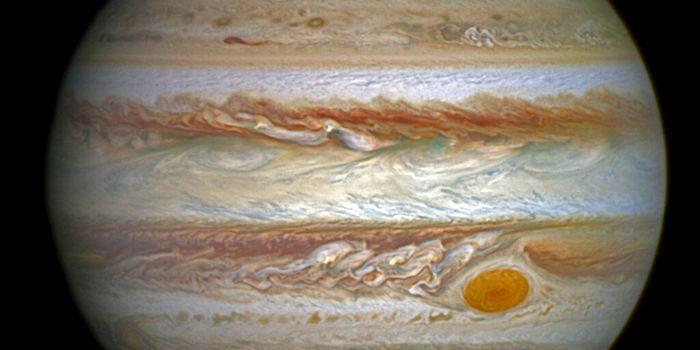NASA's Longest-Lived Mars Robot Reaches 100,000 Trips Around the Red Planet
NASA’s Mars Odyssey spacecraft was launched on April 7, 2001, and entered the orbit of Mars on October 24, 2001. During its active 23-year mission, it has changed the way we see the Red Planet but will reach an unprecedented milestone in three days as it reaches 100,000 orbits around Mars. Therefore, it’s only fitting that Mars Odyssey captured an incredible image of Olympus Mons, the tallest volcano in the solar system, on March 11, 2024. What makes this image unique is it was taken from a sideways view which also captured some Martian atmospheric layers, which scientists can examine further, including the clouds and dust that comprise the Martian atmosphere.
Single image of Olympus Mons on Mars, the tallest volcano in the solar system, obtained by NASA’s 2001 Mars Odyssey orbiter on March 11, 2024. (Credit: NASA/JPL-Caltech/Arizona State University)
“Normally we see Olympus Mons in narrow strips from above, but by turning the spacecraft toward the horizon we can see in a single image how large it looms over the landscape,” said Dr. Jeffrey Plaut, who is a Mars Odyssey Project Scientist at NASA’s Jet Propulsion Laboratory. “Not only is the image spectacular, it also provides us with unique science data.”
Along with its 23 years of service and 100,000 orbits around the Red Planet, Mars Odyssey has returned 17.1 terabits of data to Earth, 1.4 million images, 1.33 terabits of data from Mars surface missions, and provided relay support for six Mars missions, all according to a NASA infographic.
While orbiting spacecraft are typically designed to take to-down images of a planetary surface, the spacecraft thrusters can be used to point at different angles and capture a myriad of images. In this case, Odyssey captured a sideways view of Olympus Mons, but can also spin completely around the image Mars’ two moon, Phobos and Deimos, if needed.
During its 23 years of service, Odyssey has made some incredible scientific discoveries, including the presence of water ice just beneath the Martian surface on several occasions. However, given the amount of fuel remaining on the long-tenured spacecraft, Odyssey is currently scheduled to be decommissioned in the last quarter of 2025.
What new images will Mars Odyssey obtain from Mars during its remaining time in orbit? Only time will tell, and this is why we science!
As always, keep doing science & keep looking up!
Sources: NASA, Wikipedia, NASA (1)
Featued Image Credit: NASA/JPL-Caltech









